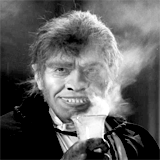Most science fiction stories nowadays are pretty much copy and paste — scientific discovery leads to disaster, death, terror, and dystopia. These books criticize and demonize scientific exploration and portray it as mankind’s downfall, and it is really getting old. It’s time to treat science and discovery as something wondrous and exciting, while still criticizing its weak points, and this is exactly what Arthur C. Clarke’s 2001: A Space Odyssey accomplishes.
Most people are familiar with the movie version, directed by Stanley Kubrick (who is an absolutely phenomenal director, by the way. Some conspiracy theorists say that he faked the moon landing and I don’t really blame them. If I was the government and I had to choose one director to fake the moon landing, it would be Stanley Kubrick). The movie was actually written side-by-side with the book in a collaboration, so the movie isn’t too far off from the book. If you watch the movie, you can still get the gist of the story, but I still highly recommend the book.
Back to the topic, 2001 is a book about discovery. An alien device in the form of a black monolith is found buried on the moon, emitting intense magnetic waves that are strong enough to disrupt signals. Upon being uncovered, it sends a loud signal to a larger monolith on one of Saturn’s moons, Iapetus. Dr. David Bowman and Dr. Francis Poole, along with several other scientists in cryogenic stasis, are then sent on a mission aboard the ship Discovery One to find the monolith on Iapetus. The true nature of their mission is unknown to them, however, and is only known to the ship’s AI, HAL 9000.

HAL is conflicted on his purpose, and, without spoiling the book or the movie, ends up jeopardizing the mission he was so desperate to save. It was almost as if, when trying to make a human-like artificial intelligence, made it too human, which resulted in internal conflict. Most people call HAL the beginning of the “evil AI” trope, but he really isn’t evil. He’s just a poor, conflicted robot trying to wrap his brain around his clashing mission instructions. This demonstrates how the story criticizes technology, while still being realistic without resorting to “robots take over the world and kill all humans.” Robots essentially are a part of the humans that created them, and, if capable of independent thought, are just as prone to mistakes and internal conflicts as we are.
Eventually, Dr. Bowman is forced to deactivate HAL in order to continue his mission to Iapetus. Upon arrival, he discovers the twin monolith, though much bigger than the original found on Earth’s moon. He enters the monolith and, well, the rest is spoilers, but the wonder and awe towards discovery is really made evident in these last few scenes, of both the book and movie.
Discovery and wonder also plays a part when the ship uses the “slingshot effect” to fling itself past Jupiter and towards Saturn. Dr. Bowman gets a quick glance at the surface of Jupiter, and describes it as “a sparkling gold”.
I don’t want to get too deep into this novel, as it has lots of symbolism and imagery that the reader should experience for themselves. So, if you’re sick and tired of trope-y sci-fi like I am, give 2001: A Space Odyssey a read, and definitely a watch as well. The movie is considered a “cinematic masterpiece”.


